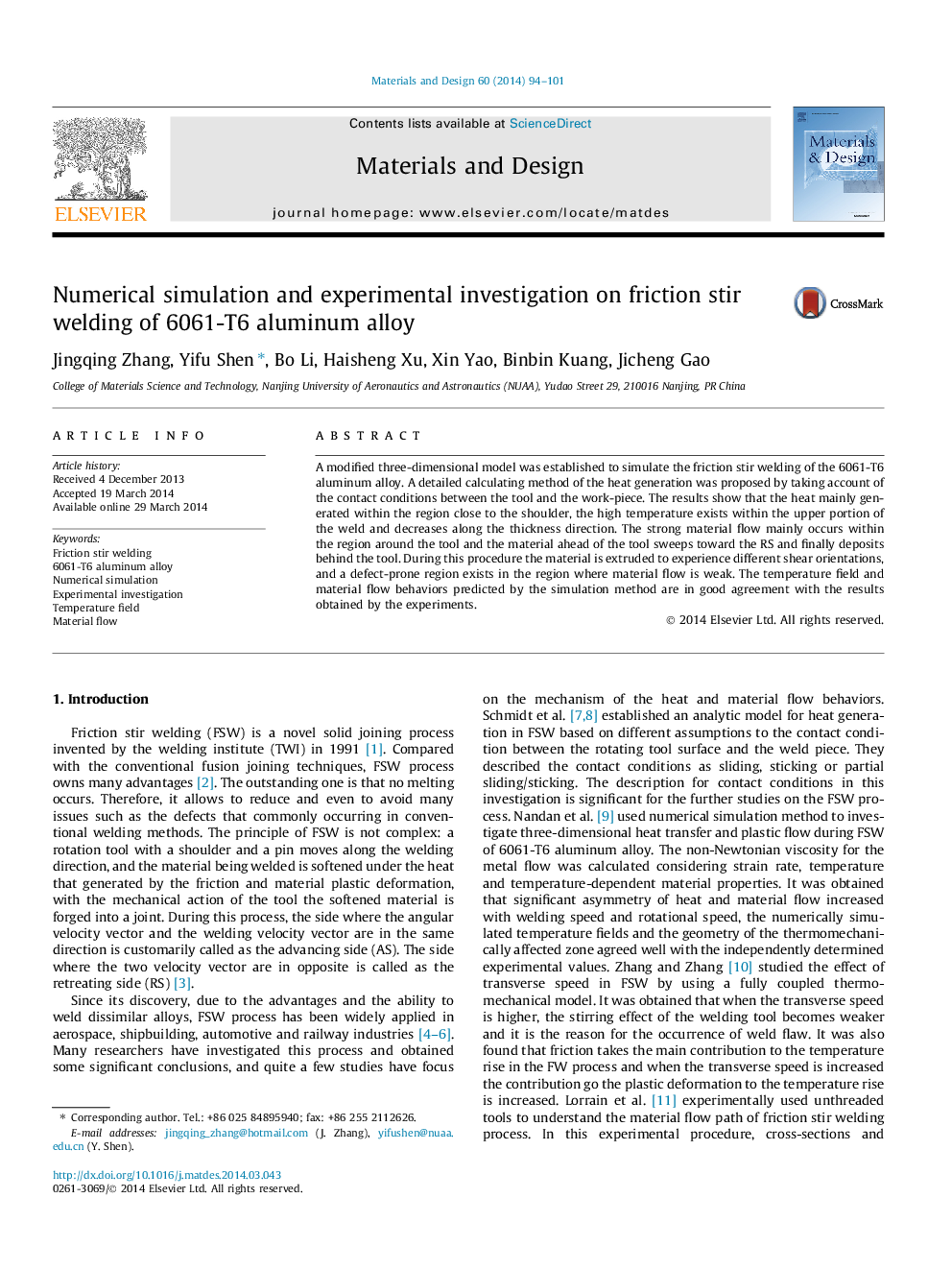| Article ID | Journal | Published Year | Pages | File Type |
|---|---|---|---|---|
| 829174 | Materials & Design (1980-2015) | 2014 | 8 Pages |
•A new model which is more approximate to the actual process was developed.•A detailed calculating method for the heat generated was proposed.•Mechanisms for the temperature distribution and material flow were presented.•Simulation results show good agreement with the obtained experimental results.
A modified three-dimensional model was established to simulate the friction stir welding of the 6061-T6 aluminum alloy. A detailed calculating method of the heat generation was proposed by taking account of the contact conditions between the tool and the work-piece. The results show that the heat mainly generated within the region close to the shoulder, the high temperature exists within the upper portion of the weld and decreases along the thickness direction. The strong material flow mainly occurs within the region around the tool and the material ahead of the tool sweeps toward the RS and finally deposits behind the tool. During this procedure the material is extruded to experience different shear orientations, and a defect-prone region exists in the region where material flow is weak. The temperature field and material flow behaviors predicted by the simulation method are in good agreement with the results obtained by the experiments.
